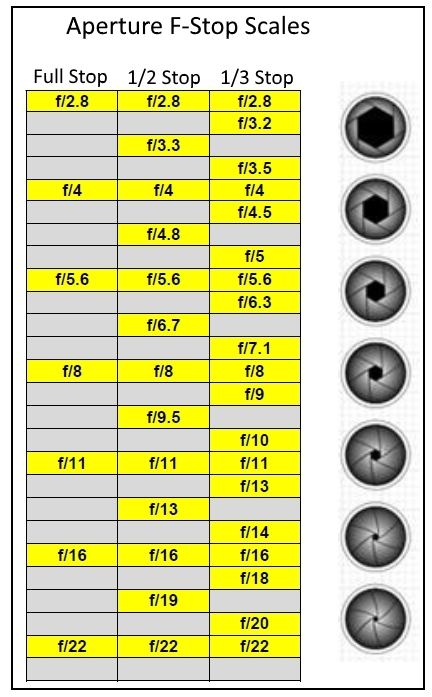

The wider the aperture (indicated by a smaller f-stop or f-ratio number), the more light is able to go inside the lens and reach the sensor. The focus here is on the whorl of hair at the top of the baby’s head so I used a very wide aperture: f/2. Newborns grow so quickly so this is an angle that I love to capture for parents so they can remember how tiny their babies once were! I”ll try to explain how they work in relation to this image! The more you study your camera and the results with these settings, the more you will understand how they all work together.Understanding aperture and f-stop numbers…do you understand any of those terms?! If not, it’s okay. If shooting with Aperture Priority, take note of how different apertures/f-stops affect the other settings.
Aperture and f stop manual#
Start with Aperture Priority or Shutter Speed Priority before going fully manual if needed. Become familiar with your camera and the different settings. Getting your ISO, Aperture, and Shutter Speed just right in order to capture the perfect image takes a lot of practice. Shooting in fully manual mode is probably one of the most intimidating and difficult things to master for beginners. This goes both ways shooting with a higher f-stop number (smaller aperture) means that less light is coming through the lens, meaning the shutter will need to stay open a little longer, which results into needing a slower shutter speed. This results in a faster shutter speed being needed. Shooting with a lower f-stop (wide aperture) means more light is entering the lens and hitting the sensor, which means the shutter doesn’t need to stay open as long to make a correct exposure.

Our f-stop setting also affects our shutter speed. But the more you practice, the more comfortable you will become with them. They all go hand in hand when shooting manual. It’s up to you to practice and find the balance between all of your settings. So keep that in mind when shooting large groups or landscapes when you need a deeper depth of field.Īs you can see, aperture affects both your exposure results and your depth of field. The higher the number, the more you would have in focus. The image below shows examples of the same image being taking at different f-stops. So the higher the number (the smaller the opening) the larger your plane of focus gets. A very shallow depth of field will result in more blurred backgrounds or foregrounds because the plane of focus (sharp areas) are more shallow. The wider the opening (or smaller the number), the more shallow your depth of field will be. The scale above also shows you how your f-stop settings can affect your depth of field. Just always remind yourself that when it comes to f-stop/aperture settings, the smaller the number, the wider the opening. F-stops are generally written as numbers such as 1.4, 2, 2.8, 4, 5.6, 8, 11 and 16.Īlways remember.the smaller the number, the wider the opening We can adjust the size of this opening by changing the f-stop (basically the calibrated measurements for aperture). When you hit the shutter button on your lens to take a photo, there is a diaphragm with an opening at the end of your lens, which controls how much light comes in and hits the sensor.


 0 kommentar(er)
0 kommentar(er)
